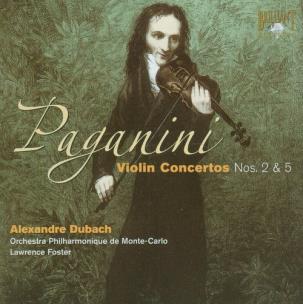- Regulamin
- Koszty dostawy
- Kontakt
- Dziś w ofercie 239 897 produktów
KSIĄŻKI
- Albumy
- Beletrystyka
- Biografie
- Dla dzieci i młodzieży
- Edukacja
- Ekonomia i biznes
- Ezoteryka
- Historia
- Informatyka
- Kalendarze
- Komiksy
- Kryminał i sensacja
- Kultura i sztuka
- Literatura faktu
- Literatura kobieca
- Literatura piękna
- Medycyna
- Nauka języków obcych
- Nauki humanistyczne
- Nauki przyrodnicze
- Nauki ścisłe
- Podręczniki
- Poradniki
- Prawo i administracja
- Przewodniki i podróże
- Psychologia
- Religia
- Sport
- Technika
- Zdrowie i uroda
ZABAWKI
- Artykuły dla niemowląt
- Bączki
- Bujaki i skoczki
- Ciągnij / pchaj
- Dla niemowlaka
- Grzechotki i gryzaki
- Karuzele i pozytywki
- Maty i centra zabaw
- Projektory i lampki
- Sortery i piramidki
- Zabawki
- Edukacyjne i kreatywne
- Figurki
- Klocki
- Lalki
- Pojazdy
- Pluszaki i maskotki
- Sport i rekreacja
- Zabawa w dom
- Zabawki drewniane
- Puzzle
- Do 200 elementów
- 201-500 elementów
- 501-1000 elementów
- Ponad 1000 elementów
- Puzzle 3D
ART. PAP
- Artykuły biurowe
- Artykuły piśmiennicze
- Bloczki i kartki samoprzylepne
- Dziurkacze
- Kalkulatory
- Nożyczki i nożyki
- Skoroszyty
- Teczki
- Wizytowniki
- Zszywacze
- Artykuły szkolne
- Akcesoria szkolne
- Modelowanie
- Notatniki i zeszyty
- Piórniki
- Plecaki i torby
- Pojemniki na śniadanie
- Pomoce naukowe
- Przybory matematyczne
- Przybory rysunkowe
- Upominki i gadżety
- Akcesoria do książek
- Artykuły balowe
- Breloki i zawieszki
- Drobiazgi, różności
- Kubki
- Oferta Świąteczna
- Papeteria, kartki i naklejki
- Skarpetki Many Mornings
- Upominki
GRY
MULTIMEDIA
- Audiobooki
- Beletrystyka
- Biografie i wspomnienia
- Dla dzieci i młodzieży
- Fantastyka
- Filozofia i religia
- Historia
- Literatura faktu i reportaż
- Poradniki
- Sensacja i kryminał
- Filmy DVD/BD
- Animowane
- Biograficzne
- Fantasy
- Horrory
- Komedie
- Romanse
- Science Fiction
- Sensacyjne / kino akcji
- Thrillery
- Muzyka CD
- Alternatywna
- Blues
- Dla dzieci
- Jazz
- Klasyczna
- Piosenka aktorska i poetycka
- Pop
- Rock
- Świąteczna i kolędy
- Akcesoria GSM
- Głośniki
- Kable i adaptery
- Klawiatury
- Myszy
- Słuchawki
PROMOCJE
ZDROWIE
LEGO

Paganini: Violin Concertos 2 & 5
Wydawca:
Brilliant Classics
ISBN:
5028421939926
EAN:
5028421939926
Nośnik:
CD-Audio
oprawa:
Plastikowa
format:
14.0x12.0cm
język:
angielski
rok wydania:
2014
(0) Sprawdź recenzje
Opis produktu
Zasady bezpieczeństwa
Paganini composed 6 numbered concertos; the 6th of 1815 actually pre-dates No.1, which appeared in 1817. The Second concerto became one of his most famous works, and one he performed most frequently. The famous finale known as 'la Campanella' became an instant hit from the premiere in Naples in 1827. Later that year Pope Leo XII created Paganini a Knight of the Golden Spur, and his international stardom continued. His playing unsettled and astonished Liszt that he retreated to his hotel room for two weeks and seriously doubted if he could become as good a pianist as Paganini was violinist. Schumann claimed that it was hearing Paganini play that jolted him out of his chosen career as a man of letters to become a composer. Paganini encouraged the stories that he had sold his soul to the devil in order to play so fantastically -- such spin and hype was good for the box office. It did however result in the church refusing him burial in consecrated ground. Franz Liszt wrote an intensely personal and moving obituary when Paganini died in 1840. The Fifth concerto is from 1830, and for many years was un-performable as all Paganini left was the solo part and some vague ideas as to scoring. It was reconstructed and scored by Frederico Mompellio who also scored the Sixth concerto in the 1970s from the violin and guitar reduction that had survived. The Fifth contains all the pyrotechnics expected of a concerto by Paganini, but the slow movement is an especially moving and unadorned Andante. Paganini refused to publish any of his concertos, thus preserving control over them at a time when there was no copyright law. The first two concertos were first published in the 1850s, over 10 years after his death.
Further information
- Recordings made in 1991--94 by Claves.
- The Fifth Concerto is a comparative rarity on CD
CENA:
14,30
zł
Cena detaliczna:
16,90 zł
15%
rabatu
Najniższa cena z ostatnich 30 dni: 14,30 zł
Produkt niedostępny
Uwaga!!!
Ten produkt jest zapowiedzią. Realizacja Twojego zamówienia ulegnie przez to wydłużeniu do czasu premiery tej pozycji. Czy chcesz dodać ten produkt do koszyka?


Wybierz wariant produktu
